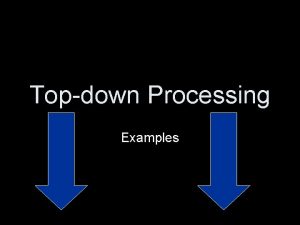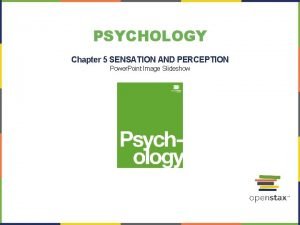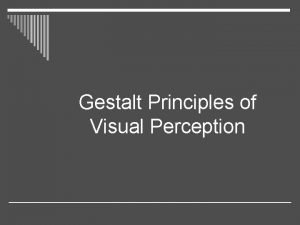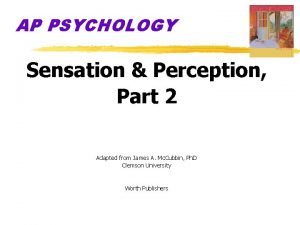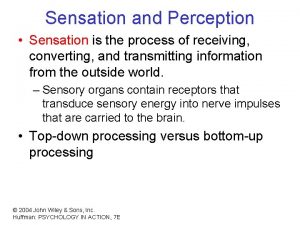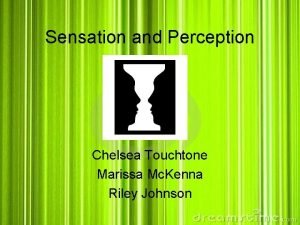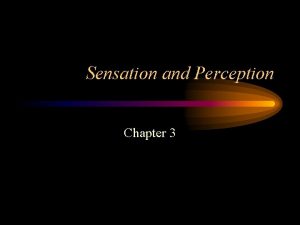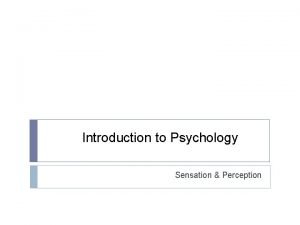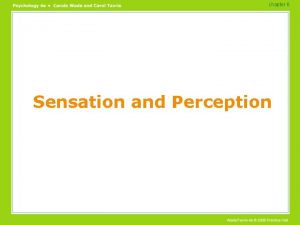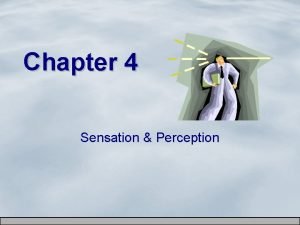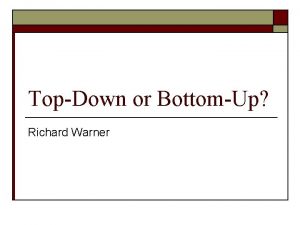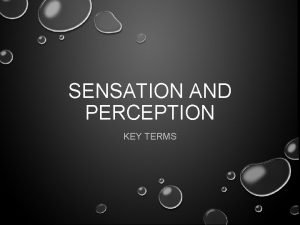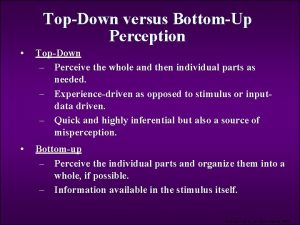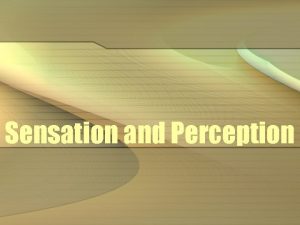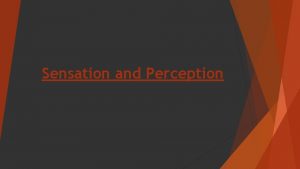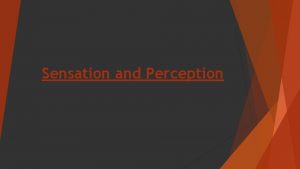Sensation and Perception Sensation Perception Bottomup Processing Topdown

Sensation and Perception § Sensation § Perception • Bottom-up Processing • Top-down Processing

Sensation § Psychophysics § study of the relationship between the physical characteristics of stimuli and our psychological experience of them § What intensity does a stimulus have to be to detect. § How sensitive are we to changing stimuli.

Theories of Sensation • Recognition Threshold Theory – the stimulus must reach a certain level before it is recognized and reacted to

Theories of Sensation § Recognition Threshold Theory § Absolute Threshold § minimum stimulation needed to detect a particular stimulus 50% of the time

Theories of Sensation § Difference Threshold § Also called “just noticeable difference” (JND) § Weber’s (vay-bers) Law § to be perceived as different, two stimuli must differ by a constant proportion (percentage) rather than a constant amount § light intensity- 8% § weight- 2% § tone frequency- 0. 3%

Subliminal Sensation & Perception • The perception of below threshold stimulus without awareness. • Evidence does not demonstrate that subliminal persuasion is possible. • “Much of our information processing occurs automatically, out of sight, off the radar screen of our conscious minds”

Theories of Sensation • Signal Detection Theory – assumes there are no thresholds – holds that response detection involves two things • Sensory process • Decision process – Involves » selective attention » response bias

Sensation • Sensory Adaptation • Sensory Deprivation • Sensory Overload

Sensation • Sensory Interaction – Smell + Tecture + Taste = Flavor
- Slides: 9
